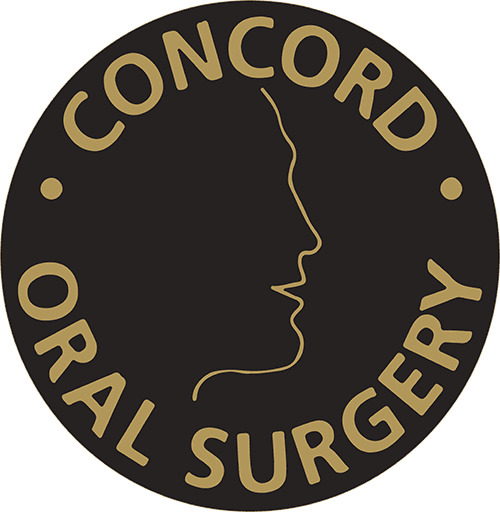Reviewed By Dr. Robert Barron, DMD
Reading Time: 3 minutes
After a tooth extraction, some soreness is normal as your mouth heals. But if the pain becomes severe or gets worse instead of better, it may be a dry socket, also called alveolar osteitis.
This blog will help you understand the difference between normal healing and a dry socket, what signs to watch for, and how a dry socket is treated.
Table of Contents
Key Takeaway
A dry socket is a painful complication that happens when the blood clot at the extraction site is lost, leaving bone exposed. Signs of a dry socket include severe throbbing pain, radiating discomfort, and bad taste or odor.
Healthy Socket vs. Dry Socket: What to Look For
A healthy socket forms a protective blood clot shortly after your tooth is removed. This clot looks dark, similar to a scab, and should gradually shrink as the gum tissue heals over.
A dry socket happens when this clot never forms or is lost too early. Instead of a dark clot, you may see whitish exposed bone inside the surgical site. Without protection, the exposed bone becomes inflamed, which causes severe pain and delays healing.
The Telltale Signs of a Dry Socket
During normal healing, discomfort should ease each day as the blood clot protects the site and the gum tissue slowly closes over. Mild swelling and tenderness are expected, but the pain should steadily improve rather than intensify.
If you have developed a dry socket, you will experience:
- Severe, throbbing pain: Instead of improving, the pain becomes worse two to four days after surgery and is not eased by medication.
- Radiating pain: Pain can spread from the extraction site to your ear, temple, or even your eye on the same side of your face.
- Bad taste or odor: You may notice a foul taste, persistent bad breath, or food debris collecting in the socket.
These symptoms are not part of normal recovery and should be taken seriously.
How to Prevent a Dry Socket
Most patients heal without complications, but protecting the blood clot is the key to avoiding a dry socket. After your extraction, Dr. Barron will provide detailed post-operative instructions to support healing. The most important steps include:
- Do not smoke or vape: The chemicals and suction can interfere with clot formation.
- Avoid straws and forceful spitting: Both can dislodge the clot before the gum tissue seals over.
- Choose soft foods: Stick to gentle foods that will not disturb the extraction site.
- Keep the area clean, but be gentle: Rinse lightly as directed, and avoid brushing directly over the socket.
For additional guidance on when to seek urgent follow-up care, see our blog on the 4 signs you should call your oral surgeon after surgery.
How Dr. Barron Treats a Dry Socket
Treating a dry socket is a simple procedure that brings quick relief. Dr. Barron will carefully clean the area to remove any debris and then place a medicated dressing inside the socket. This dressing covers the exposed bone, reducing the inflammation and pain, and allows healing to begin.
You may also be given instructions to rinse gently with salt water or an antibacterial solution at home. Follow-up visits are important, as the dressing may need to be replaced until the socket is fully healed. With proper care, pain is reduced almost immediately, and the risk of infection is minimized.
| 💡Did You Know? Platelet-Rich Fibrin (PRF) can help lower the risk of developing a dry socket. PRF is created from a small sample of your own blood and placed into the extraction site at the time of surgery. It forms a protective layer over the bone, supports the blood clot, and releases natural growth factors that speed healing. By stabilizing the area and encouraging tissue repair, PRF helps protect against complications like dry socket while also reducing pain and swelling. |
Expert Oral Surgery Care in Vaughan
At Concord Oral Surgery, we help patients in Vaughan prepare for a smooth recovery, using proven techniques to reduce the risk of complications like dry socket.
To book an appointment at our oral surgery office in Vaughan, ON, call (905) 669-2616. We are located at 3300 Highway 7 West, Suite 805 Vaughan, ON.
FAQs
Is a dry socket dangerous?
A dry socket will not threaten your overall health, but it is a serious complication that should not be ignored. Without the protective blood clot, the exposed bone can cause severe pain and leave the area more open to infection. Professional care is needed to manage symptoms and support proper healing.
Do dry sockets heal on their own?
The short answer is no. While gum tissue eventually grows over the exposed bone, this can take weeks and cause constant pain in the meantime. Professional treatment is the only way to ensure proper healing and immediate pain management.
Is a dry socket an emergency?
A dry socket is not a medical emergency, but it does require prompt dental care. If you are experiencing severe pain a few days after an extraction, you should call the dentist or oral surgeon who performed the procedure right away. They can relieve your discomfort and protect the area so it heals properly.
Where can I find an oral surgeon near me?
If you need a tooth extracted or are looking for surgical care with attentive follow-up, an oral surgeon is the right specialist to see. For patients in Vaughan and the Greater Toronto Area, Concord Oral Surgery provides expert extractions, detailed aftercare, and techniques that support a smooth recovery while lowering the risk of complications like dry socket.

